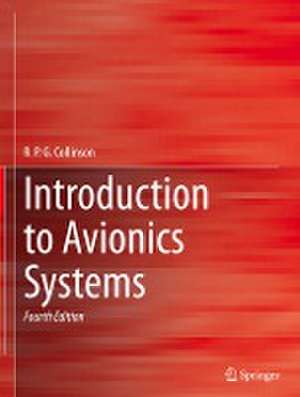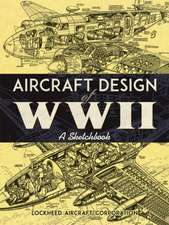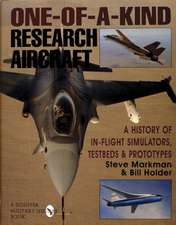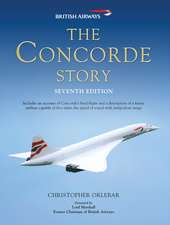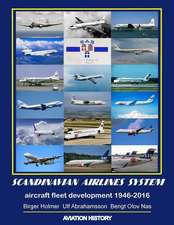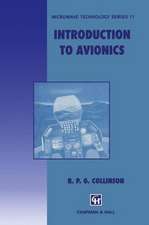Introduction to Avionics Systems
Autor R.P.G. Collinsonen Limba Engleză Hardback – 2 iun 2023
Now in a revised fourth edition, this course-tested textbook explains the basic principles and underlying theory of the core avionic systems in modern civil and military aircraft. The new edition includes extensive revisions on the latest developments in helmet-mounted displays (HMDs), the use of helmet-mounted rate gyros for helmet tracking, HUD/HMD optical waveguide system technology, and the latest advances on replacing CRTs with solid state displays in HUDs. Updates on controls and fly-by-wire include a section on civil aircraft to cover the Airbus A350 and the advances in its flight control system over the Airbus A380. A new section on automatic flight control of vectored thrust aircraft covers the BAE Systems Harrier and the Lockheed Martin F-35B Lightning 2 Joint Strike Fighter. Detailed coverage is provided for F-35B flight control systems for vertical landing.
Introduction to Avionic Systems, Fourth Edition is an ideal textbook for undergraduate andgraduate courses in avionics and aeronautical engineering, as well as professional development and training courses for post-graduates entering the aerospace industry from a wide range of technical backgrounds and practicing engineers at all levels who require an understanding of avionic systems, aircraft navigation, flight control, and data transmission and systems.
Introduction to Avionic Systems, Fourth Edition is an ideal textbook for undergraduate andgraduate courses in avionics and aeronautical engineering, as well as professional development and training courses for post-graduates entering the aerospace industry from a wide range of technical backgrounds and practicing engineers at all levels who require an understanding of avionic systems, aircraft navigation, flight control, and data transmission and systems.
| Toate formatele și edițiile | Preț | Express |
|---|---|---|
| Paperback (1) | 495.90 lei 38-44 zile | |
| Springer International Publishing – 3 iun 2024 | 495.90 lei 38-44 zile | |
| Hardback (3) | 616.41 lei 38-44 zile | |
| Springer International Publishing – 2 iun 2023 | 616.41 lei 38-44 zile | |
| SPRINGER NETHERLANDS – 25 iun 2011 | 1372.53 lei 6-8 săpt. | |
| Springer Us – 31 dec 2002 | 1381.41 lei 6-8 săpt. |
Preț: 616.41 lei
Preț vechi: 800.54 lei
-23% Nou
Puncte Express: 925
Preț estimativ în valută:
117.97€ • 122.54$ • 97.99£
117.97€ • 122.54$ • 97.99£
Carte tipărită la comandă
Livrare economică 30 ianuarie-05 februarie 25
Preluare comenzi: 021 569.72.76
Specificații
ISBN-13: 9783031292149
ISBN-10: 3031292146
Pagini: 326
Ilustrații: XVI, 326 p. 1 illus.
Dimensiuni: 210 x 279 x 27 mm
Greutate: 1.09 kg
Ediția:4th ed. 2023
Editura: Springer International Publishing
Colecția Springer
Locul publicării:Cham, Switzerland
ISBN-10: 3031292146
Pagini: 326
Ilustrații: XVI, 326 p. 1 illus.
Dimensiuni: 210 x 279 x 27 mm
Greutate: 1.09 kg
Ediția:4th ed. 2023
Editura: Springer International Publishing
Colecția Springer
Locul publicării:Cham, Switzerland
Cuprins
Chapter 1. Introduction.- Chapter 2. Displays and Man–Machine Interaction.- Chapter 3. Aerodynamics and Aircraft Control.- Chapter 4. Fly-by-Wire Flight Control.- Chapter 5. Inertial Sensors and Attitude Derivation.- Chapter 6. Navigation Systems.- Chapter 7. Air Data and Air Data Systems.- Chapter 8. Autopilots and Flight Management Systems.- Chapter 9. Avionics Systems Integration.- Chapter 10. Unmanned Air Vehicles.
Notă biografică
R.P.G.Collinson was chief systems engineer and later manager of the Flight Automation Research Laboratory of GEC Avionics Ltd. (now part of BAE Systems), in Rochester, Kent, UK. The Laboratory has been responsible for many innovative systems and techniques which have subsequently been used in the development of avionic equipment for many current European and United States aircraft. During his time with GEC Avionics, he also served as manager of the Flight Instruments Division and the Inertial Navigation Division. He was a Chartered Engineer and Fellow of The Institution of Engineering and Technology (The IET) and the Royal Aeronautical Society. Following service in the Royal Navy, he studied electrical engineering at London University, graduating with a First-Class Honours Degree. He was awarded the Silver Medal of the Royal Aeronautical Society for his contribution to the research and development of advanced avionic equipment. Following his retirement, he gave numeroustalks on avionic and aviation topics to lay and technical audiences and presented specialist lectures at two universities.Sadly, R P G Collinson passed away on 16th February 2022 just as Edition 4 was nearing completion. With the kind permission of the publisher, Edition 4 has been completed by his sons M R Collinson and S W Collinson and technically reviewed by C Bartlett, former Chief Technologist, BAE Systems, Rochester, Kent.
Textul de pe ultima copertă
Now in a revised fourth edition, this course-tested textbook explains the basic principles and underlying theory of the core avionic systems in modern civil and military aircraft. The new edition includes extensive revisions on the latest developments in helmet-mounted displays (HMDs), the use of helmet-mounted rate gyros for helmet tracking, HUD/HMD optical waveguide system technology, and the latest advances on replacing CRTs with solid state displays in HUDs. Updates on controls and fly-by-wire include a section on civil aircraft to cover the Airbus A350 and the advances in its flight control system over the Airbus A380. A new section on automatic flight control of vectored thrust aircraft covers the BAE Systems Harrier and the Lockheed Martin F-35B Lightning 2 Joint Strike Fighter. Detailed coverage is provided for F-35B flight control systems for vertical landing.
Introduction to Avionic Systems, Fourth Edition is an ideal textbook for undergraduate and graduatecourses in avionics and aeronautical engineering, as well as professional development and training courses for post-graduates entering the aerospace industry from a wide range of technical backgrounds and practicing engineers at all levels who require an understanding of avionic systems, aircraft navigation, flight control, and data transmission and systems.
Introduction to Avionic Systems, Fourth Edition is an ideal textbook for undergraduate and graduatecourses in avionics and aeronautical engineering, as well as professional development and training courses for post-graduates entering the aerospace industry from a wide range of technical backgrounds and practicing engineers at all levels who require an understanding of avionic systems, aircraft navigation, flight control, and data transmission and systems.
- Covers the theory and practical principles of core avionic systems;
- Offers unmatched range and depth of coverage;
- Includes worked examples that show how theory can be applied.
Caracteristici
Covers the theory and practical principles of core avionic systems Offers unmatched range and depth of coverage Includes worked examples that show how theory can be applied
Recenzii
"The book deals with both civil and military avionic systems. Good in-depth coverage is provided on topics such as displays, fly-by-wire controls, navigation, autopilots and flight management systems and system integration. It provides much theoretical information and calculations, particularly aimed at graduate and post graduate students. There is also a chapter on UAVs, vehicles which are rightly described as being "dependent totally on avionic systems". These are currently and increasingly used in military applications and also, in the future, for civil applications. [...] The book is very well illustrated in both black and white and colour. Very comprehensive lists of reference documents are provided. A glossary of terms and a list of symbols are provided which are particularly useful to the student readers. [...] The book provides a wealth of detailed and current information on a very wide range of topics. Inevitably, in such a dynamic industry, it will become out of date but it is written in such a way as to allow it to fill a very important gap in the aerospace literature for some years to come."
(Royal Aeronautical Society)
"... the material gives the reader an excellent and comprehensive introduction to the multidisciplinary knowledge and skills essential for involvement in any modern avionics systems development. [...] It should be essential reading for all graduates involved in aerospace systems work and those entering the avionics industry. It will also provide an excellent reference for practicing system engineers. [...] It is more than just a reference text and I would recommend it to all those with an interest in integrated airborne avionic systems."
M.V. Cook, Cranfield University, IEE Computing adn Control Engineering, Oct/Nov. 2005
(Royal Aeronautical Society)
"... the material gives the reader an excellent and comprehensive introduction to the multidisciplinary knowledge and skills essential for involvement in any modern avionics systems development. [...] It should be essential reading for all graduates involved in aerospace systems work and those entering the avionics industry. It will also provide an excellent reference for practicing system engineers. [...] It is more than just a reference text and I would recommend it to all those with an interest in integrated airborne avionic systems."
M.V. Cook, Cranfield University, IEE Computing adn Control Engineering, Oct/Nov. 2005
